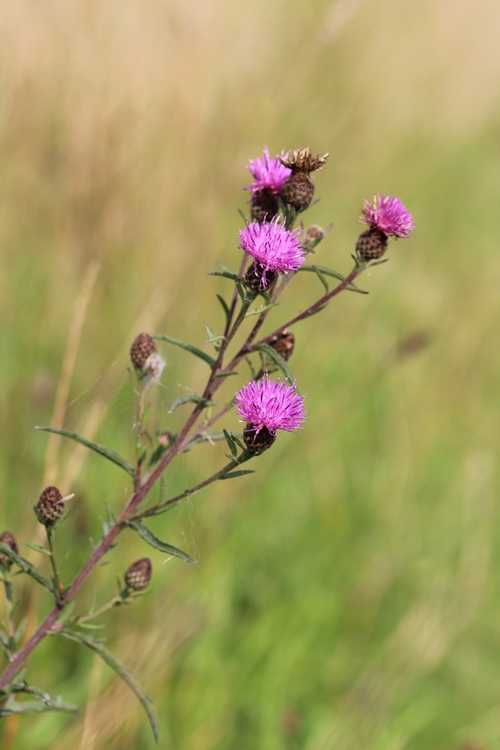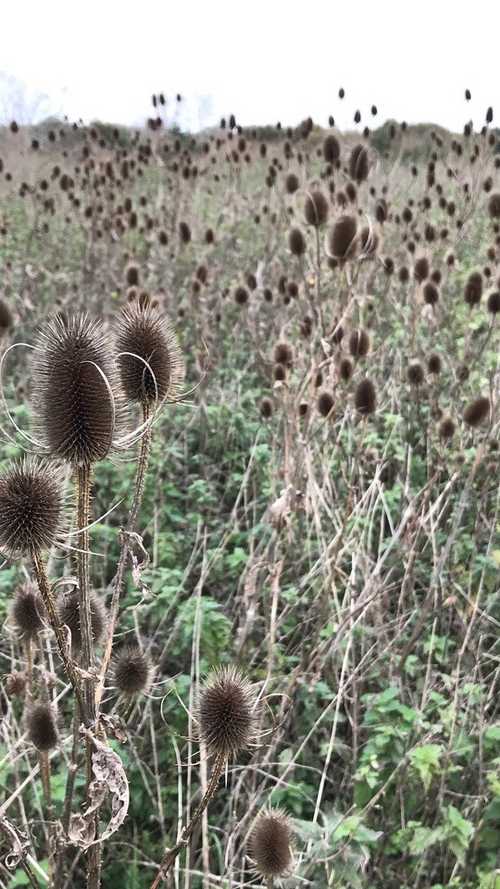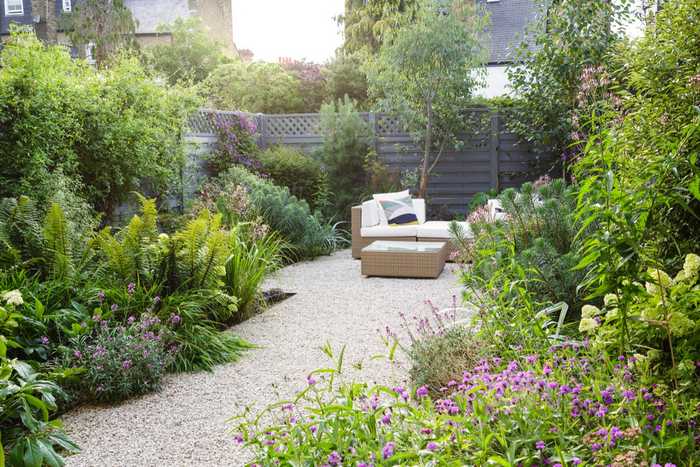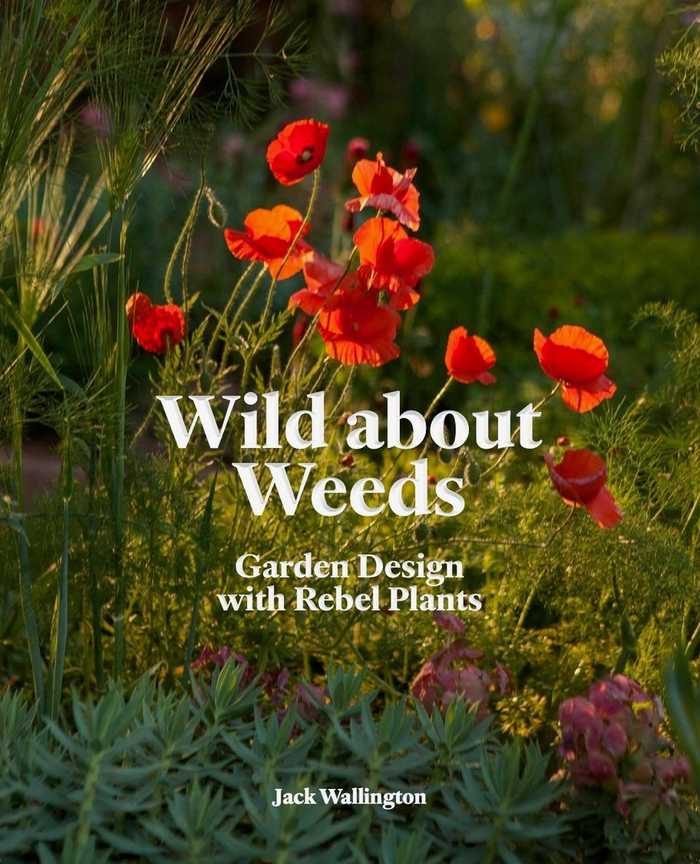Have a seat with...
Jack Wallington
Garden designer, RHS trial judge, conservationist and writer, Jack Wallington joins us to discuss how he got into garden design, his book 'Wild About Weeds' and much more.
Photographed by Christopher Lyon Anderson
Thank you for making time for our interview Jack. Your previous experience spans around writing and digital marketing - what made you transition over to garden design?
It’s a bit of a long story really, I’d worked for two decades in various creative roles and had been studying fine art in my spare time. In 2013 we bought our first flat with a small garden and my eyes were opened.

It reignited my childhood love of gardening and the art course - after five years of it - gradually switched to studying the RHS’ horticulture courses with the Royal Botanic Garden Edinburgh, which my sister in law Krista recommended to me. At the same time we took part in Monty Don’s Big Dreams Small Spaces programme, which made us focus even more on our garden transformation.
Eventually I was persuaded to attend the RHS Chelsea Flower Show by a friend working on a charity show garden. I couldn’t believe how different it all was to my expectations. The show wasn’t really about flowers but show gardens that were works of art, cutting edge and created by people in a career I’d never heard of before: garden design. All of the dots joined up and the rest is history, coupled with a lot of hard work and support from many kind people!
Of all the gardens and natural habits that you’ve studied around the world, which features do you think we’re still missing out on in the UK?
I am drawn most to the feeling of wonder in nature which can be missing in organised and practical British gardens. The times I have felt most at one with myself have been either out in nature or a small number of gardens in some other countries, such as Morocco, with their layers of meaning to layout and pattern.
If I close my eyes I can remember moments when nature surprised me in the Alaskan forests, Californian deserts and New Zealand coastal rainforests. Equally British meadows and scrublands. I’d like to better nurture that feeling in the gardens I design, or at least, encourage other gardeners to try themselves. I felt like I achieved it in our garden at home last year.
If I close my eyes I can remember moments when nature surprised me in the Alaskan forests, Californian deserts and New Zealand coastal rainforests.
Whilst trying to be environmentally friendly and recycle materials found on site where you can, what has been your most interesting, repurposed item or material? Any hidden treasures which stand out?
The most exciting perhaps a huge stone urn found in one garden which we kept as a feature planter. Less exciting but very surprising was an entire car park 30cm beneath the soil. On the subject of repurposing old items though, in my own garden I spent a year dreaming of replacing our patio’s 30 year old cheap-as-chips basic paving slabs.
When I researched prices of fancy designer options though, we weren’t in a position to afford them and I was forced to reuse the old slabs. In retrospect this is the best thing to have happened because once cleaned, their colour worked well with the planting and formed a satisfying grid. Other designers asked me where I’d sourced them and I don’t think they believed me when I said B&Q for £3 each plus a few decades of wear-and-tear. Most of the time we repurpose old patios and concrete as the sub base for the new patio, reducing transport and waste.
Talk to us about weeds. Your book ‘Wild About Weeds’ tells the story of these often beautiful plants which we relegate to the compost heap.
It sounds like weeds need a bit of a rebrand!
Yes, I feel too many plants have been lumped in the ‘weeds’ category that deserve to sit alongside our other useful and colourful garden plants. Particularly in naturalistic planting designs where I want tough, wildlife friendly plants that self-seed and spread around, weeds are perfect!
All plants are wildflowers at heart. I wrote Wild about Weeds to point out that, as gardening practices have moved on, we’ve been overlooking some of the very best plants for new naturalistic design because in the past they were labelled weeds.
Weeds don’t need watering, fertilising or supporting, and they often flower for most of the year - they’re brilliant.
All plants are wildflowers at heart.
What is your favourite plant, often considered a weed, for each season of the year?
In winter I love Dipsacus fullonum (teasel) seed heads for their silhouettes, covered in frost, or even better, with small birds on them eating the seeds. Spring has an abundance of small ground covering weeds springing into action and one of my favourites is bright purple or pale blue Viola odorata (sweet violet).

Come summer there is such an abundance you’re twisting my arm to choose a favourite but I can’t get enough of Centaurea nigra, the bright purple knapweed. In autumn, for me, it has to be the dandelion-like plants, such as Hypochaeris radicata (cat’s ear). Lots of people are excited about different cultivars of snowdrops but for me, I love all of the hundreds of different varieties of dandelion-like species. There are loads of differences between them when you stop to look.
Being environmentally friendly is now, for want of a better word, ‘popular’. Have you found any exciting new innovations in gardening have developed now more people are conscious of their impact?
No new innovations, only better understanding. When I first started blogging about gardening six or so years ago, I wrote about peat-free compost and almost everyone replied to me saying I was talking nonsense, that peat-free was poor quality. I personally haven’t noticed any difference in the quality of peat-free compost since then but very few gardeners online now say it’s nonsense. All good gardeners now know the importance of going peat-free, as a step to save peat bog habitat. Peat bogs lock in carbon and are precious natural habitats.
If you could get most gardeners to make one easy change to their practices and help our overall sustainability, what would that one change be?
Stop using pesticides and fungicides altogether because they’re causing massive declines in all insects. We live in a country that for the last few decades has been taught we need them but it’s a lie. I grow everything organically and wouldn’t want pesticides anywhere near my plants because a few squirts can kill an entire generation of insects taking years to recover, if they do at all. Many are good insects that keep the bad insects under control, recycle plant waste or are food for mammals and birds. I’m not organic because I’m particularly worried about pesticides around me or on my vegetables, it’s all about that ecosystem making our garden better.
What is your average working day like?
I usually wake up and write columns for gardening publications or articles on my site first thing after breakfast. Then I’ll concentrate on replying to emails, placing orders for furniture, plants or garden materials. Speak to contractors I work with to build and install gardens, and of course keep clients updated. Garden design is largely project and people management with lots of admin and only a certain amount of time is spent actually designing. I get everything out of the way so I have a clear head for designing in the afternoon. Around all of that of course I irritate people by posting far too much on social media.
How have the events of 2020 affected your work? How have you had to adjust?
In the first lockdown, like most people, work ground to a complete halt for a month in March 2020. Then, as scientists became confident it was safe to work outdoors, garden work started up again. I’m very hands on with my gardens and like to plant them all up myself with a couple of excellent gardeners I’ve always worked with. It was great to finally get back outdoors last spring, when I plant most gardens.
Thankfully the design work and writing continued as normal after the initial panic. People are certainly more appreciative of their outdoor spaces because of lockdowns and I’ve had lots of people interested in my style of garden design. Sadly my books suffered because book shops closed and I couldn’t do any talks, which are so important for book promotion. I tried doing some online talks but it isn’t the same.
We’re pretty restricted at the moment as we’re enduring lockdown 3, what jobs can we be doing in the garden at the moment as we look ahead to Spring?
January is a time of preparation by cleaning tools and pots, ordering new seed packets and dreaming. February is a last chance to plant and prune roses, some shrubs and fruit trees (do check as every plant is different, e.g. cherry and plum trees are pruned in summer). From mid-February to March, it’s time to begin sowing seeds. Most people are best waiting until mid to late March to sow seeds for stronger and longer daylight hours.

Photographed by Rachel Warne
For me, my garden and allotment are key for relaxation, but when I really need it I am always drawn to the wild to relax.
How do you like to relax when you’ve been especially busy (and we aren’t in lockdown)? What space are you in, what can you see, smell and hear?
For me, my garden and allotment are key for relaxation, but when I really need it I am always drawn to the wild to relax. A little moment of solitude immersed in nature. One of my favourite spots is in the middle of a North Downs meadow on a gently warm sunny, summer’s day. It’s high on the south facing slope of a hill with a distant view of rolling slopes, fields and woodland. Grasses swaying in the wind around me with lots of butterflies and bees floating from one flower to another. Although there’s a bit of a breeze, I can hear the buzz of the bees and flutter of wings, a background hum of grasshoppers and crickets. Birds occasionally soar past and I can smell the fresh grass, clean air and a subtle sweetness of watermelon from a rare orchid I know is nearby, even if I can’t see it yet.
Finally, of all the gardens you’ve visited, what is your favourite garden?
Every National Garden Scheme garden I have ever walked into. For me, the most exciting gardens are those looked after by the person who owns, rents or simply potters in it. I’m interested in gardens as an expression of our individual personalities. Every gardener is an artist whether they realise it or not. So whether it’s a tiny balcony with recycled tins and pots or something grander, it tells a story when we open our eyes to read it.
Buy your copy of Wild About Weeds by Jack Wallington
Find out more...
You can find out more about Jack through his Garden Design website here:
Follow Jack Wallington on Facebook, Instagram & Twitter:
The Sitting Spiritually 'Have a Seat With' series takes a look behind the scenes at how we switch off from the bustling modern-day lifestyle. We speak to people of all sorts of backgrounds and lifestyles around the country as we seek to explore the different ways of relaxing and just taking a moment.
Posted on February 25th 2021

